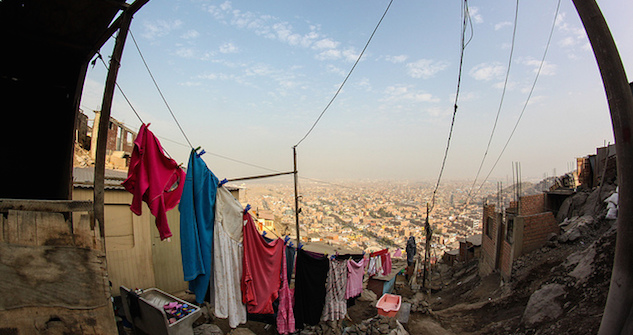International Climate Change Diplomacy: the Path from Lima to Paris

Coinciding with the 20th Conference of the Parties (COP) starting in Lima today, Krislyn Tan examines the path towards an international agreement on climate change at the COP 2015 in Paris.
The 20th Conference of the Parties (COP), regarding the Kyoto Protocol, starts in Lima today. Last month, a number of experts from the EU, Asia and Australia attended a combined AIIA, KAS and University of Melbourne workshop to discuss the future path for international climate change diplomacy. The COP 2014 in Lima in will be a crucial step towards deciding the scope and structure of the agreement to be finalised at the COP 2015 in Paris. This agreement will set new climate change strategies and standards to be adopted into domestic legislation.
With a growing consensus that the world’s greenhouse gas emissions will need to peak by 2020, climate change diplomacy is likely to look towards a target which calls for fast action, multilateral commitments and tougher legislation, both domestically and internationally. The US-China deal illustrated a renewed global commitment to climate change, and it is expected that it will encourage other countries to bring forward their own contributions.
Challenges, however, still exist in reaching binding targets and agreements. The concept of common but differentiated responsibilities is a consideration that has, and continues, to impact upon climate change diplomacy. Accountability is still a key issue of contention, but long-term environmental impacts should be taken into consideration and developed countries should remain committed to providing assistance to the countries that need it most.
Delegates at the AIIA, KAS and University of Melbourne workshop highlighted the fragmentation of developing nations as a bloc, observing the way they are creating a greater number of regionally diverse groups bound by similar interests. This may increase the difficulty of reaching an international agreement. Delegates at the workshop spoke of the inadequacies of the Annex system, arguing that it fails to reflect the changing realities and revolving circumstances that affect decision-making on climate change issues. Delegates were also concerned about the transition away from mitigation policy towards adaptation policy, expressing a fear that China’s potential reluctance in Lima to make their targets more transparent could cause a collapse of political confidence. Although they are hopeful that the deadline for an agreement in Paris will drive a cycle of ambition and competition, they fear that backsliding is also equally likely to occur, especially if major emitters are reluctant to come forward.
The US-China deal has been hugely important in the development of climate change diplomacy. It has been seen both as a credible policy signal from the Obama Administration, as well as an opportunity for China to emerge as a global power. The normative shift contained in the deal is likely to have a positive impact on the ability to reach a binding agreement at the COP in Paris. The deal has also challenged Australia’s bruising domestic conversations about climate change in the last few years. This is a discussion that has fluctuated between an active rejection of climate change policy and a desire to see Australia take leadership on climate change issues. Australia has been an influential force in climate change politics due to its rich natural resources and its economic interest in continuing to export coal. Given its domestic performance, however, Australia’s authority has diminished internationally, raising questions over its future in climate change diplomacy. The deal, and the precedent set by the US, has the potential to create new opportunities for Australia to change its role in climate change diplomacy. In order to maximise this opportunity Australia will need to move away from defining its targets in terms of narrow national interests and demonstrate greater transparency in its decision making process.
Ultimately, a legally binding agreement is the highest form of commitment a country can take in climate change diplomacy, and it is the hope that an agreement will be reached at the COP 2015 in Paris creating a new path for climate change diplomacy that will see climate change policy being translated into domestic law across the globe.
Krislyn Tan is a former intern with the Australian Institute of International Affairs, National Office.